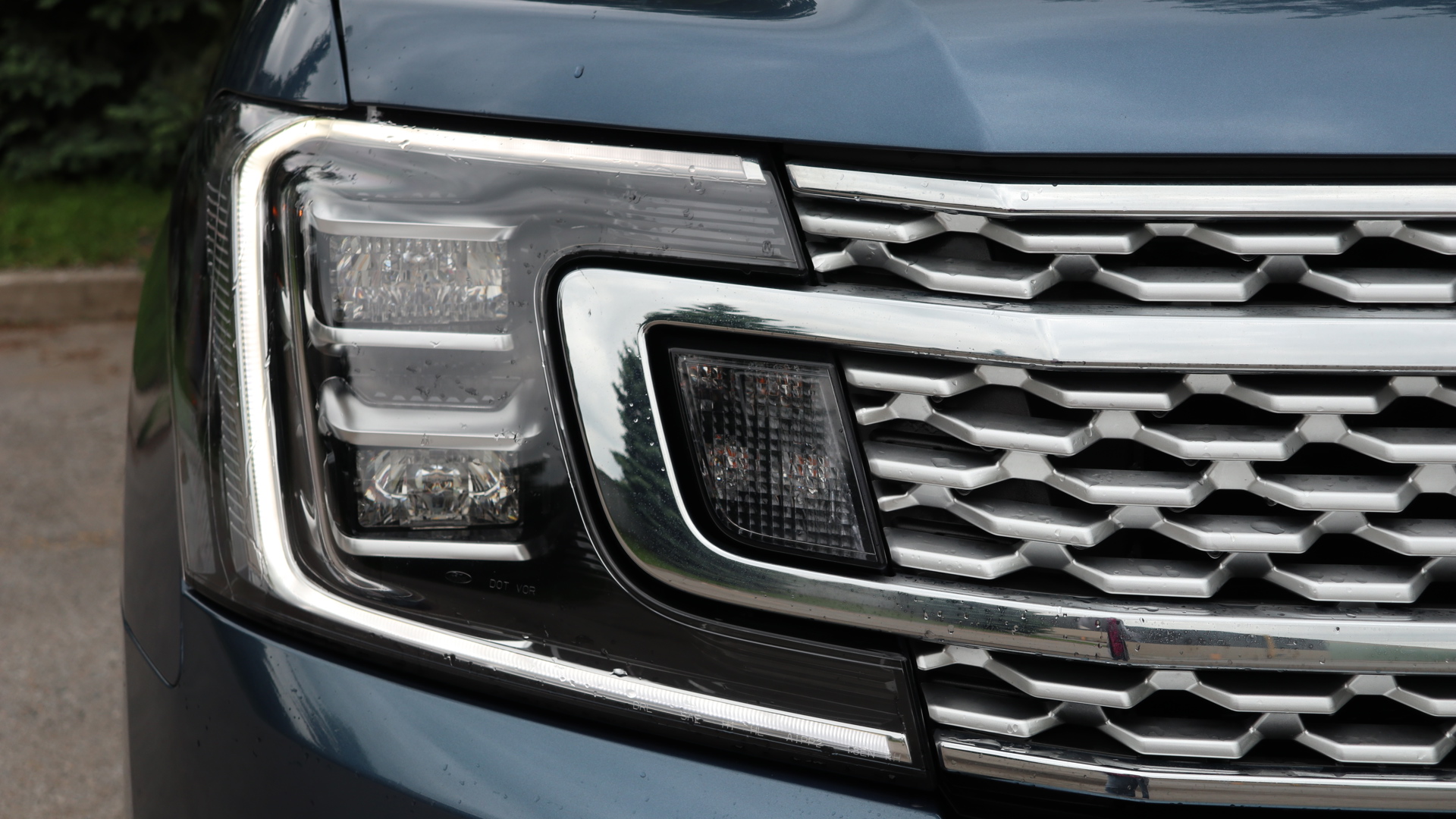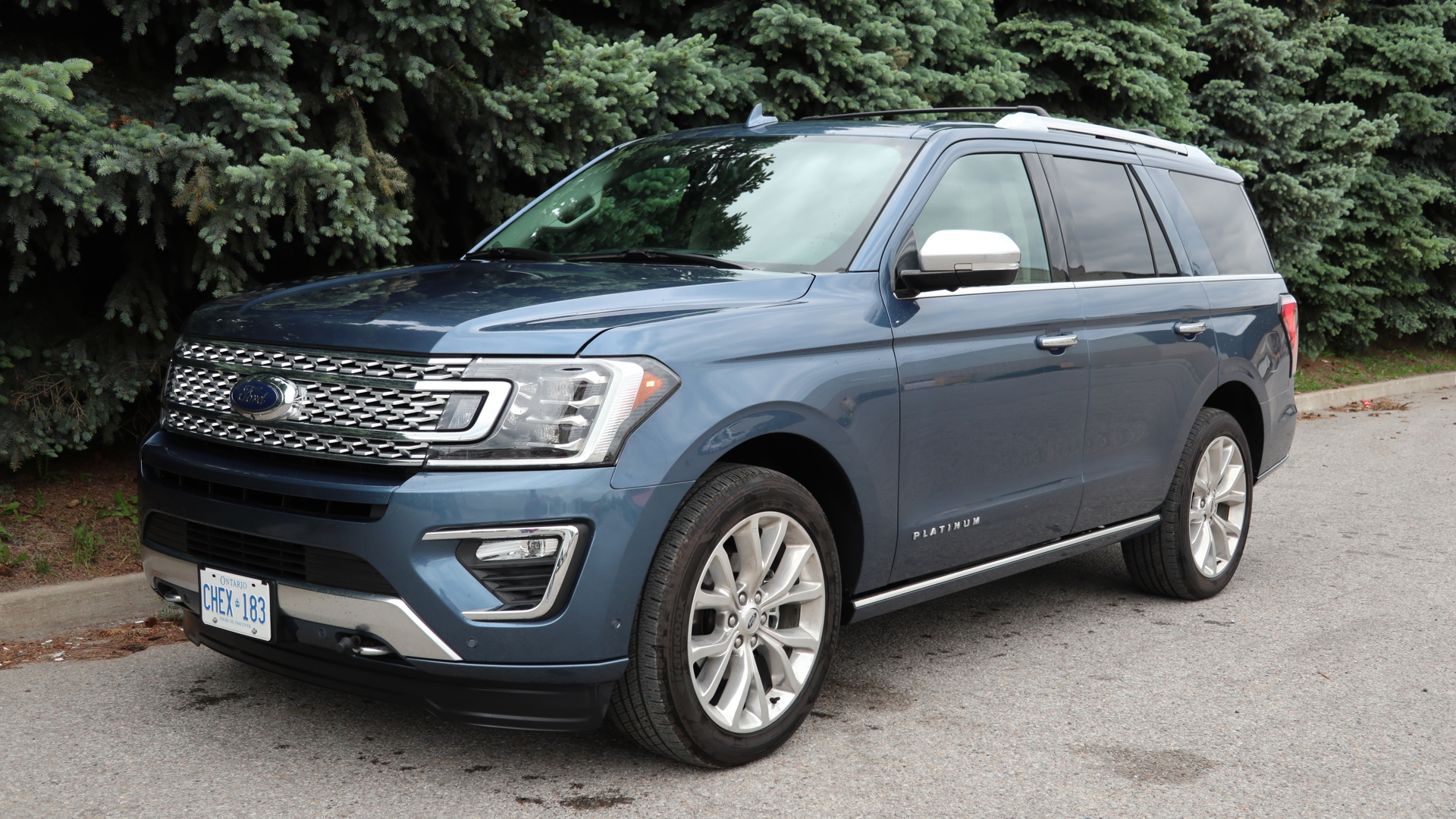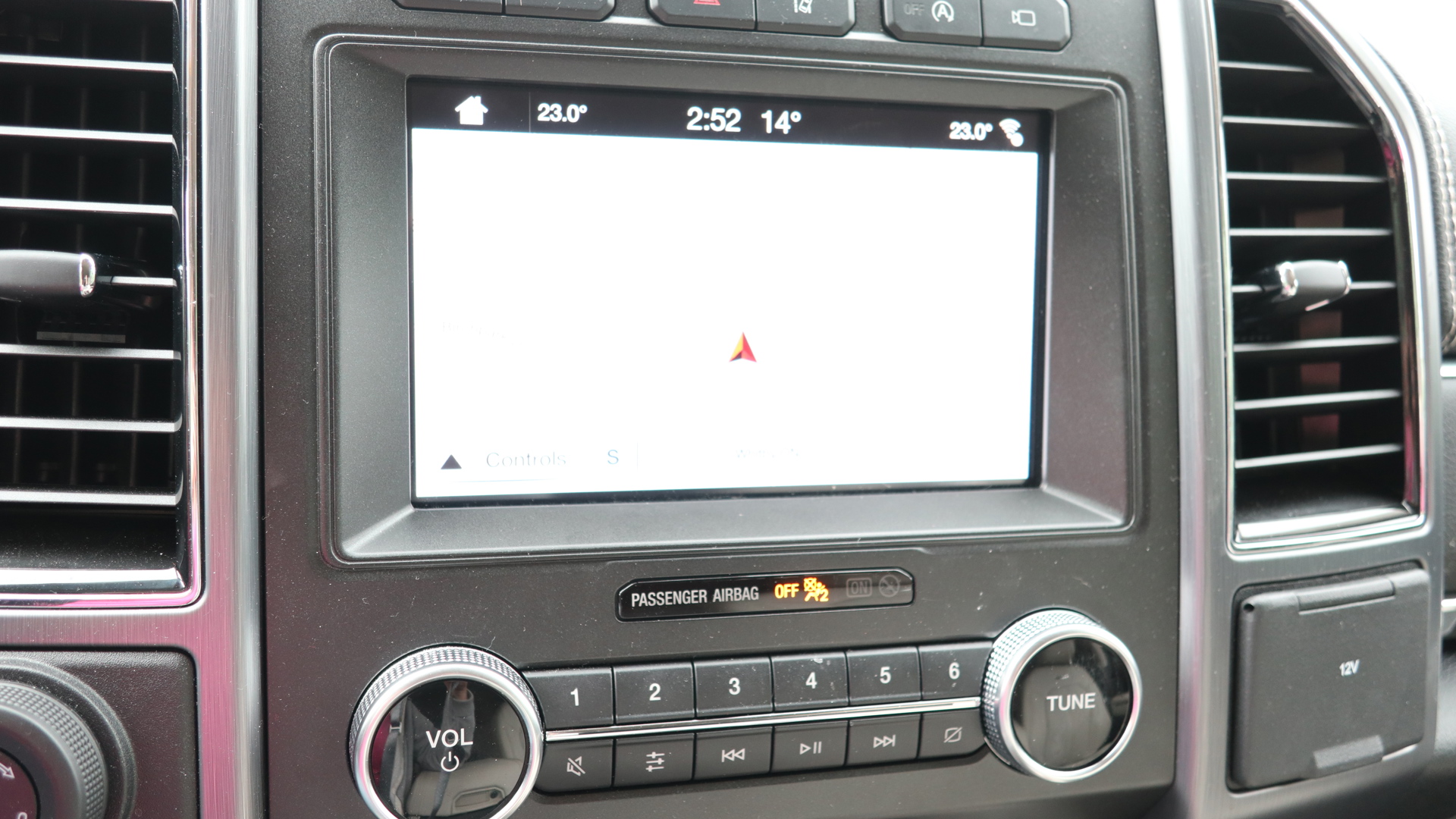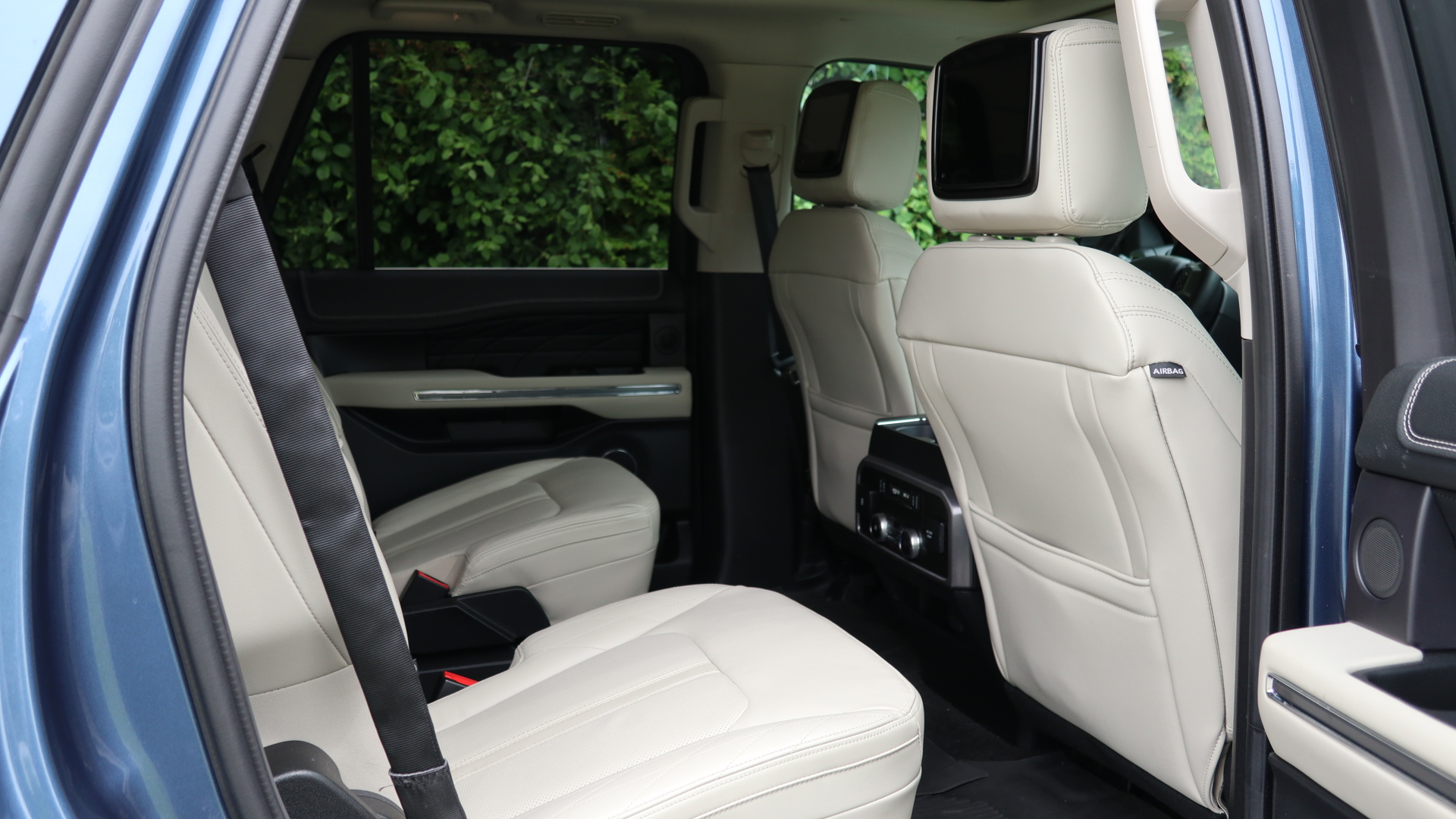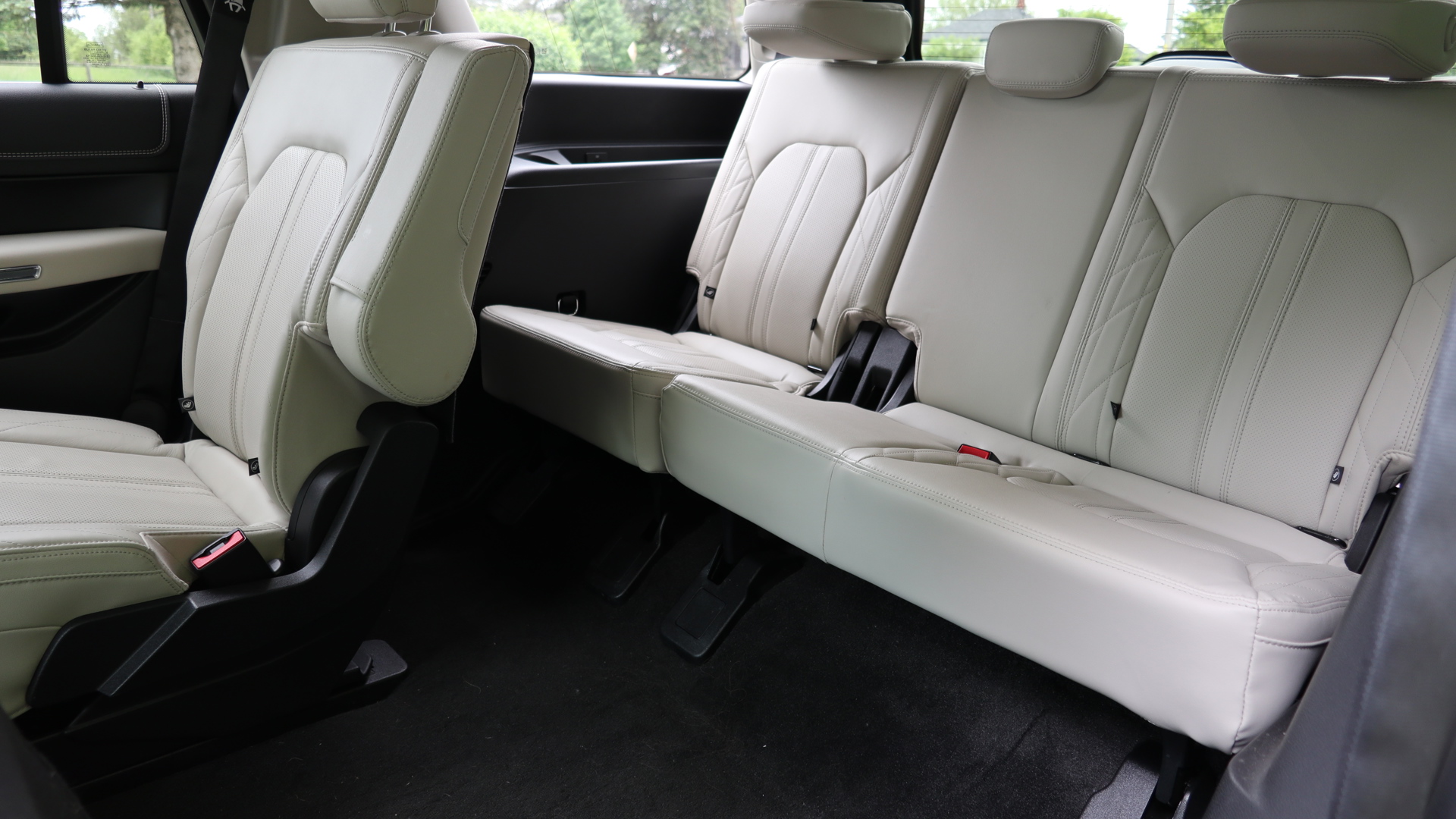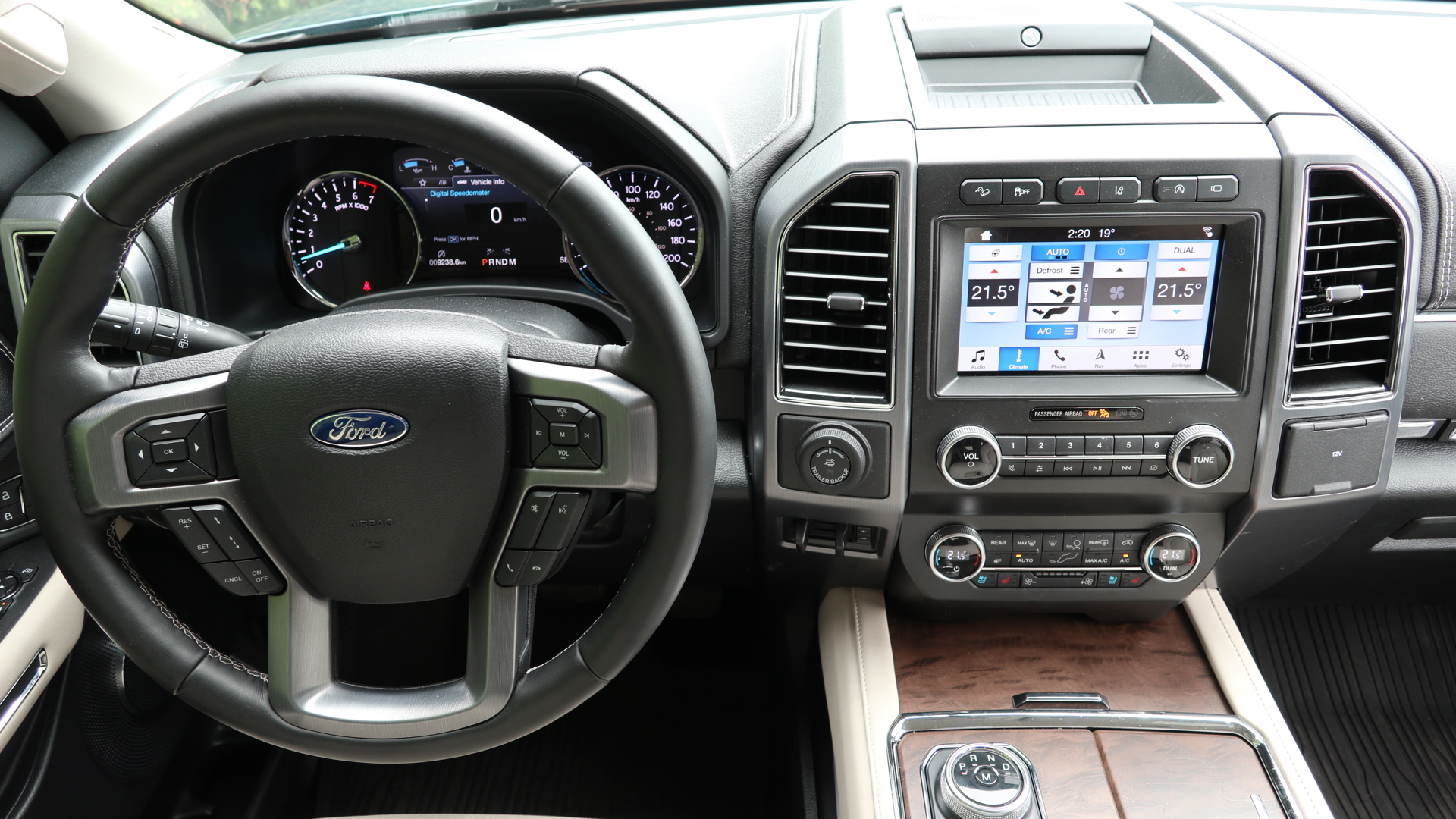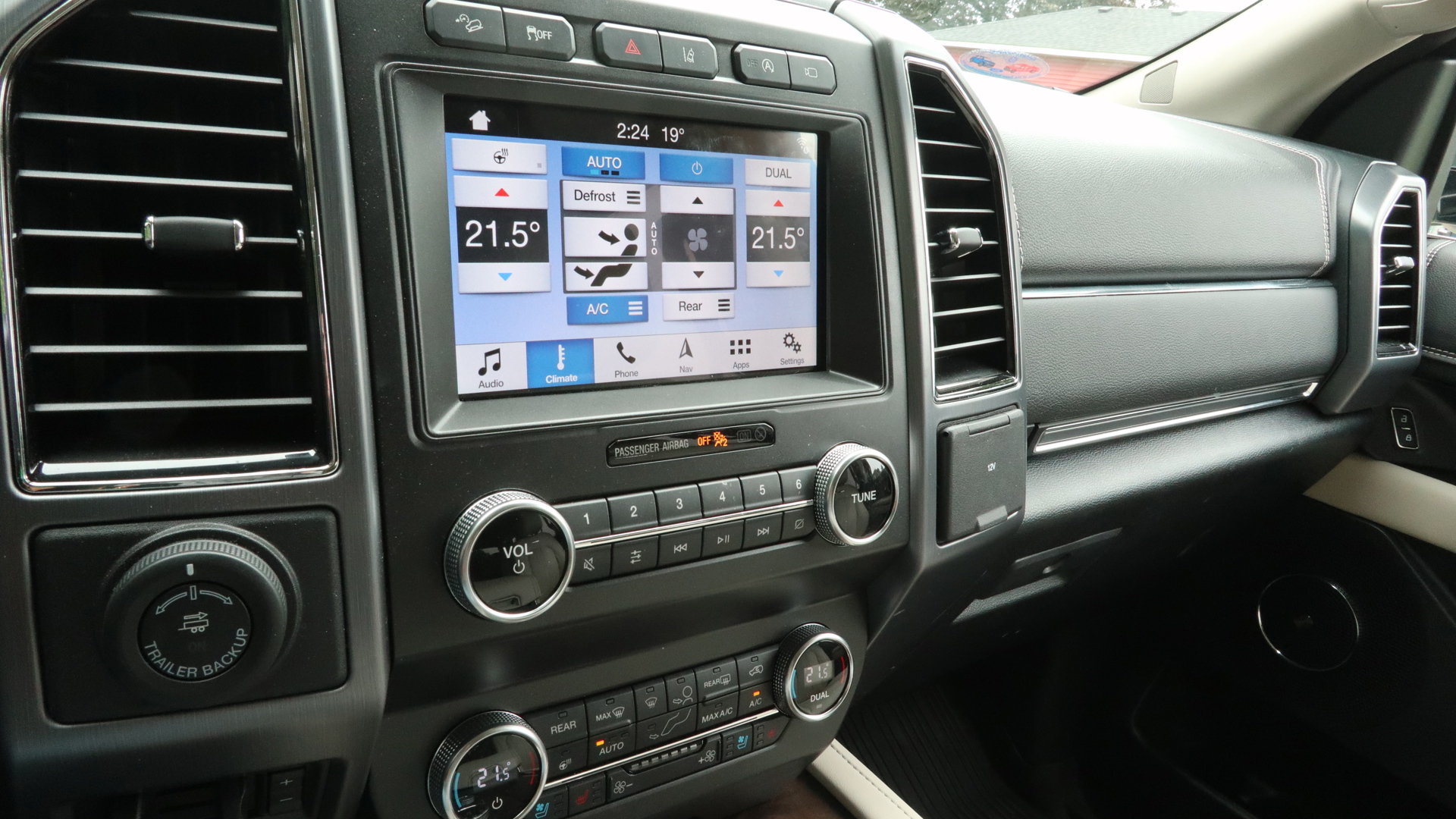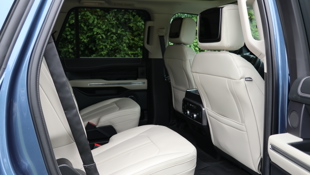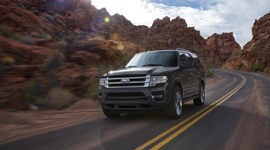 AutoTrader SCORE
AutoTrader SCORE
-
STYLING8/10
-
Safety9/10
-
PRACTICALITY7/10
-
USER-FRIENDLINESS9/10
-
FEATURES8/10
-
POWER9/10
-
COMFORT6/10
-
DRIVING FEEL8/10
-
FUEL ECONOMY8/10
-
VALUE6/10
Whether you need a big vehicle, or just want one, Ford provides the bulk with the Expedition, its largest sport-ute. It comes as the regular Expedition, as I drove it; it’s also available as the longer Expedition Max. Both have three rows of seats, but the Max extends the rear end for more cargo space.
A minivan remains, and always will remain, the epitome of family-friendliness with its sliding doors and interior flexibility. But if one must have a massive SUV, then the Expedition substitutes fairly well.
The regular Ford Expedition comes as the XLT, starting at $60,549; as the Limited at $73,549; and as my tester, the Platinum, beginning at $81,899. Mine was also equipped with several options, bringing it to $86,399 before freight and taxes.
Styling 8/10
It’s just a box-atop-a-box, but I think the Expedition’s a good-looking rectangle, especially with the Platinum’s mesh grille. As with most mainstream three-row vehicles, the squared-off roof provides full headroom all the way to the rear. Power-activated running boards are standard on the Platinum.
The butt-end integrates nicely with the overall design as well, and with just enough chrome to make it interesting. The power tailgate opens hands-free when you kick your foot under the bumper.
Safety 9/10
The Expedition gets top marks from NHTSA for crash protection, and all but one star for rollover protection (the latter being pretty much the norm for large sport-utes).
A Driver Assistance Package is an extra $1,200 on the XLT and Limited, but it’s standard equipment on the Platinum. It includes adaptive cruise control with stop-and-go capability, lane-keeping assist, pre-collision assist with pedestrian detection, automatic high-beam headlights, and rain-sensing wipers (which, like those from every manufacturer, work great in heavier rain, but are confused by drizzle).
Practicality 7/10
A minivan remains, and always will remain, the epitome of family-friendliness with its sliding doors and interior flexibility. But if one must have a massive SUV, then the Expedition substitutes fairly well. The third-row chairs are hard and flat, but there’s a great deal of legroom even when the second-row seats are all the way back. The second-row chairs move forward far enough that it’s easy for most adults to slip in there. Both the second and third row fold flat. Power-folding second- and third-row seats are standard, but my tester had second-row power-folding captain’s chairs for an extra $800.
There’s a generous amount of small-item storage up front, including an open cubby atop the dash, a closed one in the centre console, and upper and lower gloveboxes. However, you don’t get a huge amount of cargo space behind the third row. Ever see someone picking up people at the airport, and all the passengers are loaded in while the driver stands there befuddled, wondering where on earth he’s going to put their luggage? That will be you. If you’re going to consistently carry three rows of gear-equipped people, you’ll want to spring for the cargo-friendlier Expedition Max.
User Friendliness 9/10
In a sea of vehicles where technology for the sake of technology seems to increasingly be the trend, the Expedition is still relatively simple. The dual-zone automatic climate control uses big dials for setting the temperature, as does the stereo for its volume and tuning. The front seats, which are both heated and ventilated, can be warmed or cooled using real buttons rather than paging through computer screens.
The centre-stack infotainment system uses Ford’s Sync 3, which the company has, over the years, improved by simplifying it. The icons are large and intuitive, and the system works very well. There is voice control for several functions, and I was particularly impressed with the navigation, which listened intently and then brought up the correct addresses, even when I’d just asked for point-of-interest names.
Features 8/10
Items that are standard or optional on the lower trim levels, and are all standard on the Platinum, include power-adjustable pedals, power tilt-and-telescopic steering wheel, tri-zone climate control, wireless charging, LED headlamps and fog lamps, power running boards, power-folding mirrors, blind spot monitoring, and panoramic sunroof. The Platinum adds such items as 22-inch wheels (which look nice, but budget more to shoe them with winter rubber) and massaging front seats.
My tester was also equipped with a headrest-mounted rear-seat DVD entertainment system, for an eye-watering $2,100, and with a heavy-duty trailer tow package for $1,400. This tops out the towing capacity at 9,200 lbs (maximum is 6,500 lbs otherwise) and includes the Pro Trailer Backup Assist from the F-150. This gives you a console-mounted dial to spin left or right to send the trailer in that direction while the steering wheel moves on its own, but don’t expect it to make you a “pro” overnight.
You still have to know where to first position the trailer before you can use the assist to back it into your spot. Plus, you have to adhere a set of stickers to the trailer and then calibrate it to the truck. The system isn’t quite as hook-up-anything-and-you’re-an-expert as the advertisements for it might suggest.
Powertrain 9/10
The Expedition offers a single engine choice: a 3.5-litre EcoBoost (turbocharged) V6, but power depends on the trim. In the XLT and Limited it makes 375 horsepower and 470 lb-ft of torque, but in the Platinum, it’s boosted to 400 horsepower and 480 lb-ft.
The transmission is a ten-speed automatic, and while US buyers can opt for rear-wheel drive, all Canadian models are 4x4. It’s a part-time system that can run in rear-wheel drive for fuel efficiency, in four-wheel low for off-road rough stuff, and in an automatic four-wheel setting that lets you use it on hard pavement.
Not all 4x4 systems include this – if there’s no “auto” setting, using it on hard surfaces can cause driveline binding – and it’s handy when you’re driving in conditions such as alternating spots of snow and dry roads.
The Expedition is a heavy vehicle, but this engine does a great job of getting it moving, especially when you need passing power on the highway.
Comfort 6.5/10
The Expedition features a very quiet cabin and a bump-soaking suspension that’s smooth but not wallowy. The flat third row is as hard as you’d expect, but surprisingly, those front- and second-row seats are not always as comfy as they look.
They’ll do the job on short hauls, but I took one of these on a long trip, and after three or four hours in the saddle, I felt it. I ended up relying on the massaging seat to take the kinks out of my spine.
Driving Feel 8/10
For all its bulk, the Expedition feels smaller from behind the wheel, and it takes corners with more poise than you’d expect from something this tall and heavy. It also has an amazingly tight turning circle.
The steering is light, but there’s enough weight for confidence, and it feels planted on the highway. For all of that, though, the brake pedal needs some retuning; the Expedition stops properly, but the pedal is spongy. That’s bad enough when it’s empty, but a squishy pedal feels even worse when there’s a trailer hooked behind.
Fuel Economy 8/10
You’re not going to get crossover-style consumption out of a body-on-frame sport-ute (the Expedition’s greasy bits come from the F-150’s undercarriage), but over a week with it, I averaged 12.5 L/100 km in it – precisely hitting its published combined city/highway rating. It takes 87-octane regular-grade gas, too.
That’s lower than the published rating for truck-based competitors like the Chevrolet Suburban and its GMC Yukon sibling (14.3 L/100 km), Nissan Armada (15.5) and Toyota Sequoia (16.4). Keep in mind, though, that when you ask a lot of a turbocharged engine – including hard acceleration and towing – it’s gulping down extra gas along with that extra air, and your consumption will rise accordingly.
Value 6.5/10
I’m a bit old-school, and it’s still tough to wrap my head around my tester coming in at $86,399 with options. That used to be Lincoln money, not Ford (although the Navigator starts north of $90,000).
Optioning out a luxury GMC Yukon Denali to approximately the same level as my tester would take it to $90,895. At the other end, loading up a Toyota Sequoia takes you to $76,475, while a Nissan Armada tops out at $75,498, although both of those have been around for a while and feel dated, as well as being thirstier.
Conclusion
The Expedition plays in a segment that’s just a sliver of the market in Canada. Automakers are cranking out a lot of three-row unibody sport-utes, and that’s where most buyers will go, with lower sticker prices and fuel consumption overall. But there are still some who want a big, body-on-frame beast, especially if there’s some serious towing to be done. And if that’s the case, Ford makes a decent-driving and well-featured option to consider.
| Engine Displacement | 3.5L |
|---|---|
| Engine Cylinders | V6 |
| Peak Horsepower | 400 @ 5,000 rpm |
| Peak Torque | 480 lb-ft @ 2,250 rpm |
| Fuel Economy | 14.1/10.6/12.5 L/100 km city/hwy/comb |
| Cargo Space | 592 L (3rd row upright); 1,627 L (3rd row folded); 2,961 L (2nd and 3rd rows folded) |
| Model Tested | 2019 Ford Expedition Platinum |
| Base Price | $81,899 |
| A/C Tax | $100 |
| Destination Fee | $1,790 |
| Price as Tested | $88,289 |
|
Optional Equipment
$1,400 (Heavy-duty trailer tow package), $800 (2nd-row power-folding captain’s chairs), $200 (All-weather floor liners), $1,200 (Rear DVD entertainment system).
|
|





